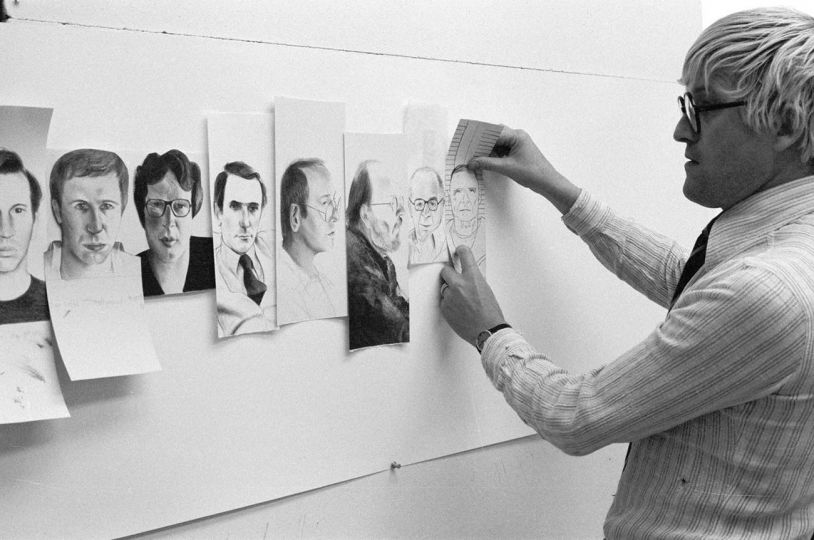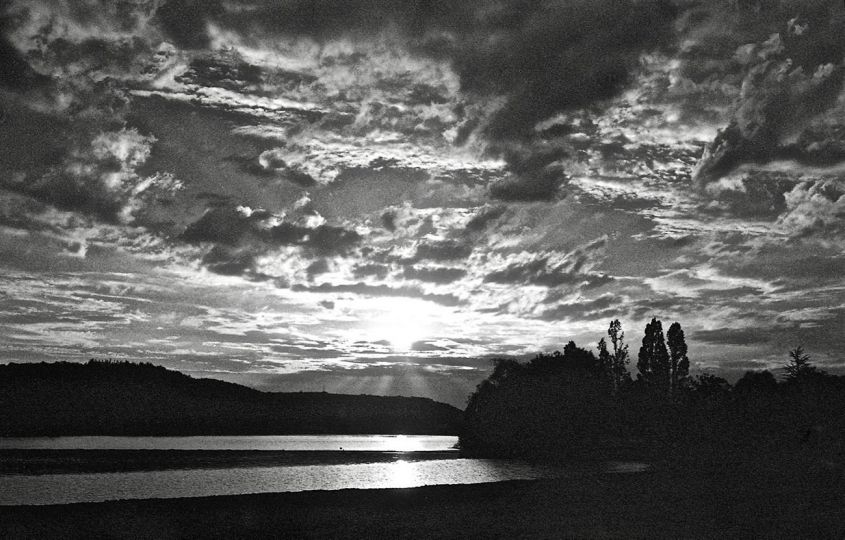By Tanya Silverman
A unique election season just wrapped up at the University of Michigan Museum of Art (UMMA) in Ann Arbor, Michigan. One thousand candidates stayed in the race from September 21, 2018, through January 12, 2020, representing the experiences of everyday people and places, bringing diverse cases from history to the fore. Ultimately, 101,276 votes were cast for a series of atypical contenders portraying typical scenes: vernacular photographs.
For the exhibition “Take Your Pick: Collecting Found Photographs,” UMMA invited visitors to decide on the 250 items that will enter the museum’s permanent collection. Vintage prints of persons amid suburban backyards and bowling alleys populated a panorama amongst snapshots of objects such as city skyscrapers and indoor floral arrangements. No images were formally titled but rather numbered, in integers, #1 through #1,000. While showcasing a democratic visual medium exercised in a democratic manner, the exhibition encouraged a palpably democratic practice by providing pencils and paper ballots whereupon patrons could indicate their top 20 choices.
The penultimate entrant (#999), showing an interracial couple standing on the beach, maintained the most popularity, according to Assistant Curator of Photography Jennifer Friess, who tallied up over 1,726 votes. The second place (#12), “an early twentieth-century studio portrait of young women smoking in large decorative hats,” totaled 933 votes.
Thematically speaking, pictures of people became the most prominent amongst the 250 winners, now designated in the gallery. Friess indicates examples of “serious portraiture” along with “cheeky beach scenes and leisurely activities,” not to mention military and familial images.
“Quite a few landscapes made the cut,” she adds, “which I think will play well with the works that are already in our photography collection.”
Voters selected a diverse array of formats from pre-digital times. Friess cites “some early Kodak ones and twos—the earliest images from the 1880s to 1890s—all the way up to those glossy prints that you might get from the pharmacist from the ‘80s and ‘90s.” Cyanotypes, Polaroids and hand-tinted photographs are also slated to stay at UMMA.
All of the 1,000 displayed images came on loan from Peter J. Cohen, a New York-based collector whose breadth of vernacular photographs amounts to over 60,000 specimens. Cohen has obtained his host of snapshots from flea markets as well as online outlets through the years. He organizes these pictorial artifacts according to categories, for example, National Parks, Human Pyramid, Cornfield and Dangerous Women, the latter of which became the topic of a book Snapshots of Dangerous Women (2015). He says that he is currently searching for subjects including people with newspapers and cyanotype prints.
Cohen has been donating sizable portions from his collection to institutions such as the MoMA, Metropolitan Museum of Art and Art Institute of Chicago. Having participated in numerous group and solo shows, Cohen says that he pitched the voting strategy to other academic venues over the course of three years, but to no avail.
“University of Michigan came up with the idea all by themselves, with no prompting from me,” remarks Cohen. “I couldn’t believe it.”
The polling concept was congenial to UMMA’s aim to take on nuanced approaches.
“The room in which this exhibition is hosted is a new experimental curatorial space, and this is the first show to come to fruition there,” says Friess, the aforementioned curator. Dubbed as “Artgym,” the gallery bore electoral hallmarks during the voting stage of “Take Your Pick” with an onsite ballot box and “I VOTED AT UMMA” stickers to sport, in addition to response cards for voters to write why they chose a specific candidate.
Friess explains that the procedure of selecting 1,000 vernacular photographs as “Take Your Pick” competitors took about one week. In collaboration with Cohen’s assistant and her awareness of his collection, Friess set off to New York with her own understanding of UMMA’s collection needs. The two fused their spheres of knowledge in order to cull through pieces, mostly in categorized boxes, for nomination.
When the photographic candidates were installed, they were intentionally encased in Plexiglass, Friess says, for viewers to witness “how these images were really experienced for decades,” with details such as deckled edges, tape residue or notes. As such, several items with handwriting and personal messages made their way into the top 250. Also chosen were two examples of the broad topic “Paper Moon,” a widespread trend from the late nineteenth through early twentieth century in which sitters posed in studios or carnivals along a crescent lunar prop.
After “Take Your Pick” closes on February 23, 2020, the winning photographs will be added into UMMA’s collection—which holds works by Gary Winograd, Dorathea Lange and Ansel Adams—for future exhibition and research purposes. Friess is excited to include response cards in the curatorial file in order to credit the public voice that prevailed in the acquisition process.
https://umma.umich.edu/the-collection#photography
















